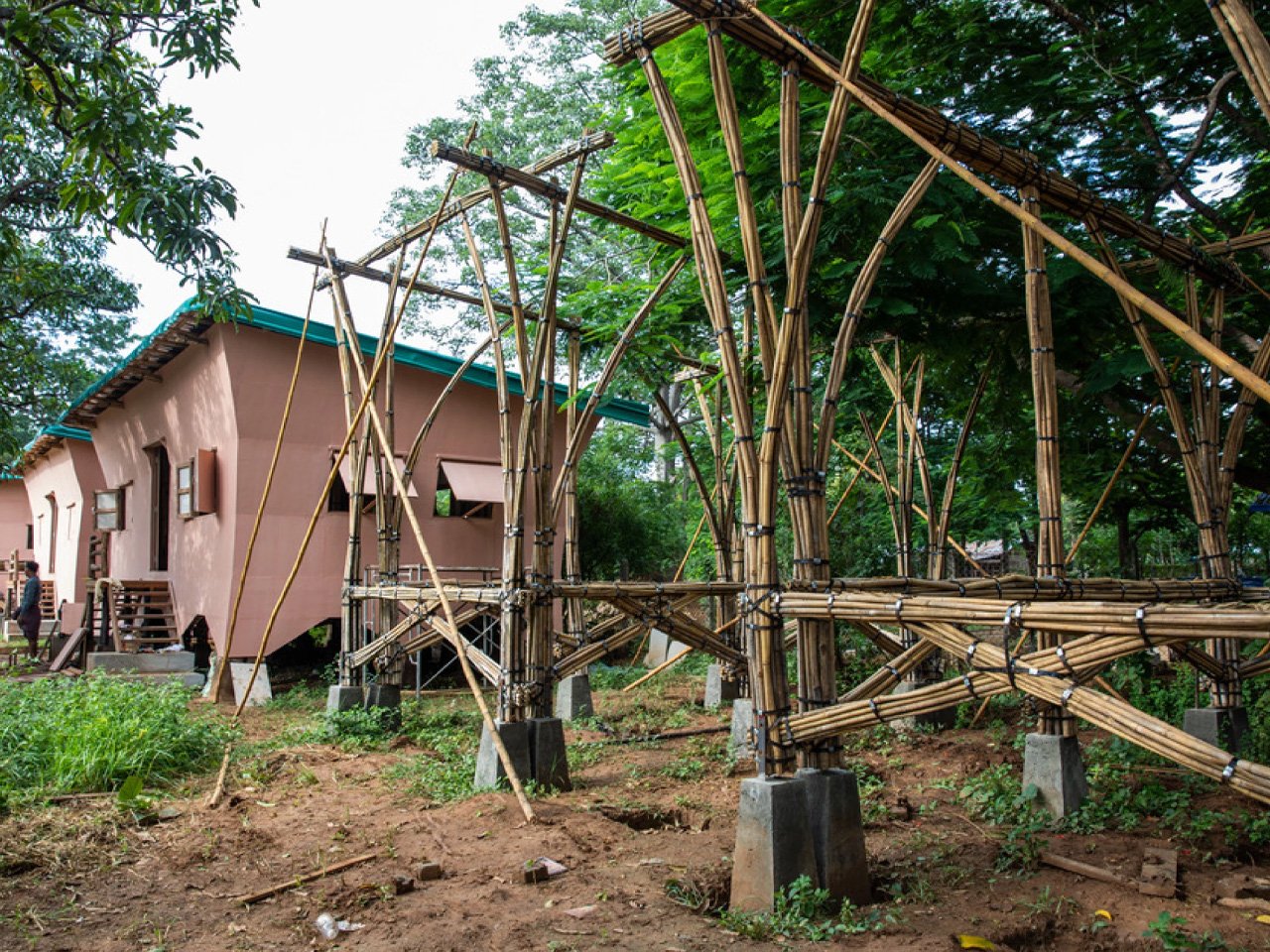When the ground started shaking on that March morning in 2025, residents across central Myanmar braced for the worst. The 7.7-magnitude earthquake that tore through the region left destruction in its wake, toppling buildings and shattering lives. But in Mandalay, something remarkable happened. A cluster of 26 bamboo houses refused to fall, standing defiantly against nature’s fury just 15 kilometers from the epicenter of the earthquake.
These weren’t your typical bamboo huts. They were part of Housing NOW, an ambitious project that began in 2019 when Yangon-based studio Blue Temple set out to tackle Myanmar’s housing crisis. Originally designed for families displaced by conflict, these lightweight structures had become an unexpected testing ground for innovative construction. The earthquake proved what the architects had hoped all along—that bamboo could be transformed into structurally interlocking frames capable of absorbing seismic shocks.
Designer: Blue Temple
Innovation in Construction
Behind this breakthrough stands Raphaël Ascoli, founder of Blue Temple, whose journey into bamboo architecture began in corporate boardrooms in Japan. Leaving that world behind, he moved to Myanmar with a vision of community-centered building that would use local materials in revolutionary ways. When Myanmar’s military coup struck in February 2021, Housing NOW evolved from a housing initiative into something more urgent—a modular bamboo system engineered specifically for emergency and conflict situations.
The magic lies in the details. Ascoli and his team discovered that small-diameter bamboo, abundant and largely overlooked, could be bundled and engineered into something extraordinary. The cost? About the same as a smartphone for an entire house. But this wasn’t just about affordability. Each modular home takes less than a week to assemble, with families working alongside Blue Temple’s technical team in a process that builds both houses and communities.
Building for the Future
The numbers tell their own story. Seventy-nine units now dot conflict-affected regions across Myanmar, while 500 DIY Bamboo Manuals have found their way into communities, empowering people to build their own safe homes. The international community has taken notice, too—MIT Solve recognized the project in their Ecosystems and Housing category, and UNICEF Innovation30 named Ascoli one of their Young Innovators Shaping the Future.
What started as a local solution is becoming something bigger. Blue Temple is planning a 550 square meter bamboo workshop in Bago city that could prefabricate hundreds of houses annually, while the technology itself is crossing borders—engineers are already applying lessons learned in Myanmar to construct larger buildings in Madagascar. That March earthquake wasn’t just a test of structural integrity; it was validation that innovative approaches to ancient materials can provide modern solutions for the world’s most pressing housing challenges.
The post These $300 Bamboo Houses Just Effortlessly Survived A 7.7 Earthquake In Myanmar first appeared on Yanko Design.

